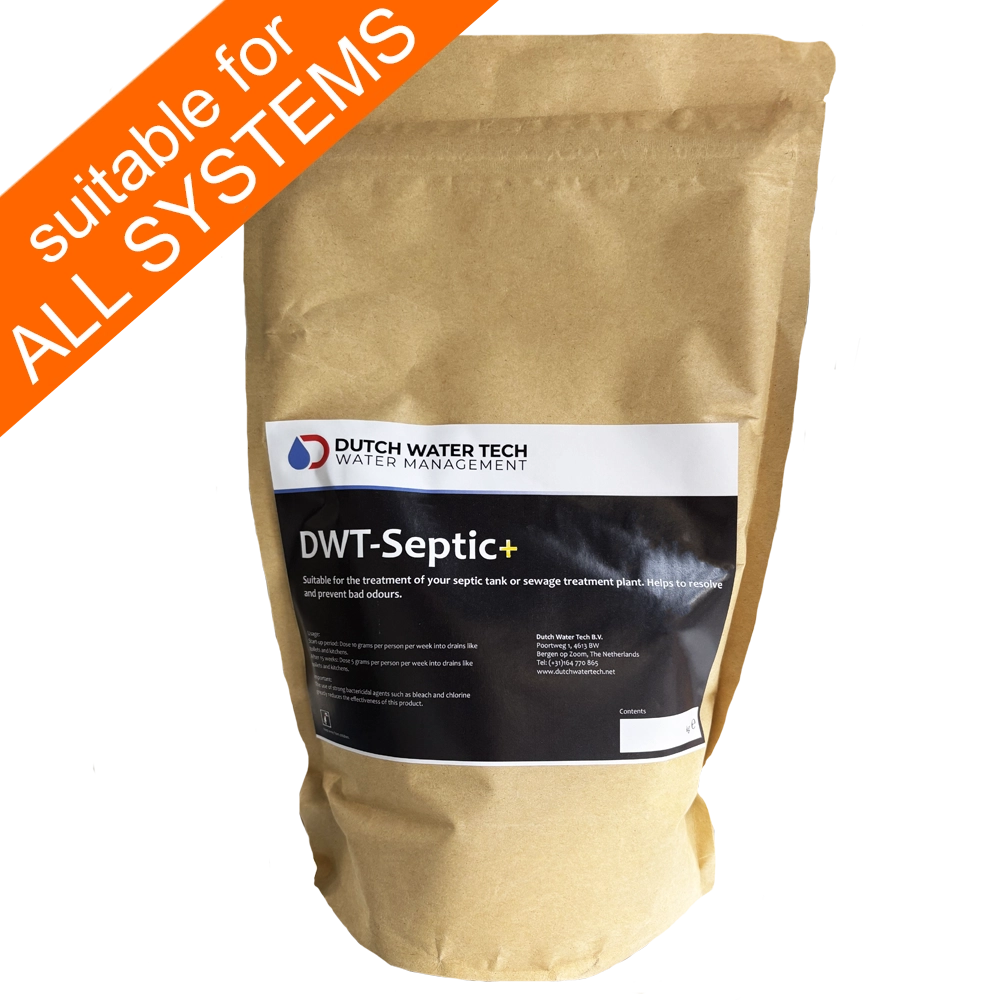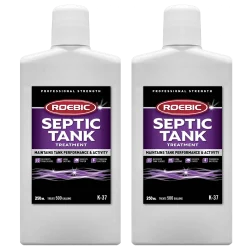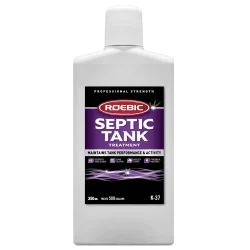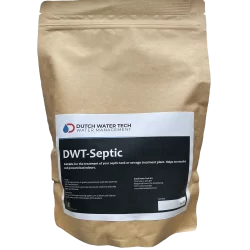Home » Knowledge base » Septic Tank. How it works?
Septic Tank System Operation
Septic tanks, how do they work?
The septic tank is an underground tank that receives domestic wastewater. In the septic tank this water is partly purified. and afterwards it is often discharged into a ditch or creek. Occasionally, the septic tank is also discharged into the sewer system. A septic tank is based on a low degradation of the offered dirt. The function of a septic tank is to allow the solids in the waste water to settle, and these solids also have a certain impact on the water it enters. As a consequence of remving these particles, the wastewater has less impact on the oxygen management of the ditch or stream it enters.
In addition to this, floating particles such as greasy substances and toilet paper and be retained by the bulkheads and will partially decompose. The picture below shows the cross section of a standard septic tank.
The septic tank will usually consist of two, partly separated compartments. In the receiving compartment, most of the solid parts are captured, and floating parts also remain here. Subsequently, the water can flow freely to the second compartment, but some solids will also settle in the second compartment. Finally, the water can flow freely to the surface water or sometimes to the sewerage system.

The working process of a septic tank: degradation of sewage sludge
In the septic tank there are two types of decomposition, or putrefaction. Anaerobic decomposition takes place without oxygen, and this is the most common form of degradation in the septic tank. This decomposition is slow and produces bad odours. For example, gases released during anaerobic breakdown include hydrogen sulphide, which is also known for its rotten egg smell. Methane can also be produced, and while these gases smell very bad they have the potential be dangerous in high concentrations.
When water enters the tank, oxygen is also released, and is used by aerobic bacteria to carry out aerobic decomposition. The advantage of this type of breakdown is that it is faster and no smelly gases are produced.
Both types of decomposition are accelerated during high temperatures. Below 10°C, the breakdown is minimal, but the benefit is that the septic tank smells less. However, it may cause the tank to fill up faster. Above 13°C, the decomposition will be faster. In summer, the temperature will rise above 13°C faster which means faster decomposition, and as a result, the septic tank or cesspool will start to smell.
As mentioned earlier, the degree of purification in a septic tank is rather limited. This degree of purification is expressed in the following terms: BOD, COD and SS.
BOD: Biochemical Oxygen Consumption
Biochemical Oxygen Consumption describes how many oxygen micro-organisms are needed to decompose the waste. The dirtier the water, the more oxygen is needed to clean it. This only applies to substances that can be broken down by micro-organisms, and BOD depends on the temperature.
For example, a septic tank removes approximately 30-40% of BOD from the incoming wastewater.
COD: Chemical Oxygen Consumption
The Chemical Oxygen Consumption is a measure of the amount of oxidisable substances in the water. When there is too much dirt and too little oxygen in the water for the micro-organisms to break down, the COD is the measure for the amount of oxygen gas required.
For example, a septic tank removes approximately 30-40% of the COD from the incoming wastewater.
SS: Suspended Solids
Suspended Solids is the English name for dissolved solids. It is also a measure of the pollution of wastewater. These particles can partly be removed by sedimentation.
For example, a septic tank removes approximately 75% of the SS from the incoming wastewater.

Advantages of a septic tank:
- It is a simple technology.
- It does not require any energy.
- Low maintenance costs.
- Long lifespan.
Disadvantages of a septic tank:
- Relatively low removal of organic matter and nutrients.
- Sludge needs to be removed regularly.
- Harmful and, in the worst case, flammable substances may be produced.
- Odour nuisance is a common problem.
What can you do to improve septic tank performance?
Septic tank performance: Improve the microbiological process
Improving the microbiology, your septic tank has several advantages:
- It helps to prevent bad odours.
- It also helps to optimise the purification which increases the efficiency.
- The septic tank needs to be emptied less often.
As the septic tank works with micro-organisms, it is important that you consider what enters the tank. For example, cleaning agents that contain a lot of chlorine or bleach are not recommended. These detergents are strong desinfectants, which is useful in the bathroom, but means that the bacteria in the septic tank will die as well. Also, toilet cleaners or toilet cubes often contain chlorine. You can find alternatives for sale in every supermarket, you can also find various cleaning products that are suitable for your septic tank, that are 100% eco-friendly. More information and a range of suitable cleaning products can be found here.
What products do you have for better septic tank performance?
Our products:
There are several products on the market that improve the function of septic tank. The products you can buy from us are all based on harmless micro-organisms which improve the breakdown process. The aerobic bacteria ensures that odour problems disappear quickly and the yield is increased.
For example, we have Bio-Septic, Bio-Septic Plus and Roebic K37 in our range.
- These products are extremely suitable for the reactivation and maintenance of your septic tank or HSTS (Home Sewage Treatment System).
- it is a 100% biological solution, that is not harmful to the environment.
By adding these bacteria ,you can keep the (existing) bacteria culture in your tank in top condition!
Recommended Products for your Septic Tank
-
DWT-Septic Plus – Septic Tank Bacteria – 1kg
Cesspool Bacteria Treatment £57.45 £47.88 (excl. VAT) Add to basket -
Septic Tank Bacteria Booster | Concentrated Formula
Septic tank bacteria £51.45 £42.88 (excl. VAT) Add to cart -
Roebic K37 Septic Tank Treatment | Concentrated Formula
Septic tank bacteria £27.95 £23.29 (excl. VAT) Add to basket -
DWT-Septic – Septic Tank Additives – 1kg
Cesspool Bacteria Treatment £46.95 £39.13 (excl. VAT) Add to basket






